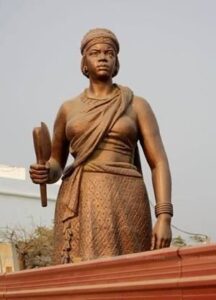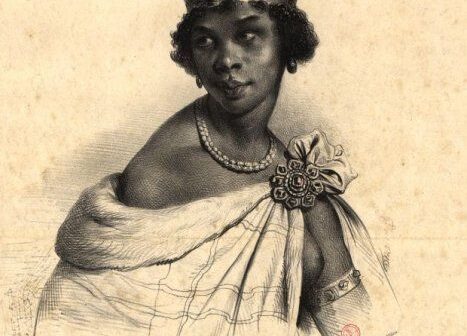
Queen Anna Nzinga (c. 1583 – December 17, 1663), also known as Njinga Mbande or Ana de Sousa Nzinga Mbande,[1] was a 17th-century queen (muchino a muhatu) of the Ndongo and Matamba Kingdoms of the Mbundu people in Angola.
She came to power as an ambassador after demonstrating an ability to tactfully defuse foreign crises, as she regained control of the Portuguese fortress of Ambaca.
Being the sister of the king, Ngola (King) Mbande, she naturally had an influence on political decisions, when the king assigned her to represent him in peace negotiations with bordering countries. Nzinga assumed control as regent of his young son, Kaza.
December 17, 1663 Nzinga Mbande, queen of the Ndongo and Maamba Kingdoms in southwestern Africa, died. After the death of her brother, Nzinga assumed the title of Queen of Ndongo in 1623. From 1624 to 1657, she led her troops in battle against the Portuguese colonizers.
After signing a peace treaty with Portugal, Nzinga devoted her efforts to resettling formerly enslaved Africans. After her death, the Portuguese accelerated their occupation of southwest Africa and significantly expanded the slave trade.
A major street in Luanda, Angola is named in Nzinga’s honor and a statue of her sits on an impressive square. A biography, “Nzinga: Warrior Queen of Matamba, Angola, Africa, 1595”, was published in 2000 and a play, “Nzinga, the Warrior Queen”, was produced in 2006. Nzinga’s name is enshrined in the Ring of Genealogy at the Charles H. Wright Museum of African American History in Detroit, Michigan.
Today she is remembered in Angola for her political and diplomatic acumen, as well as her brilliant military tactics. A major street in Luanda is named after her, and a statue of her was placed in Kinaxixi on a square in 2002, dedicated by President Santos to celebrate the 27th anniversary of independence.




